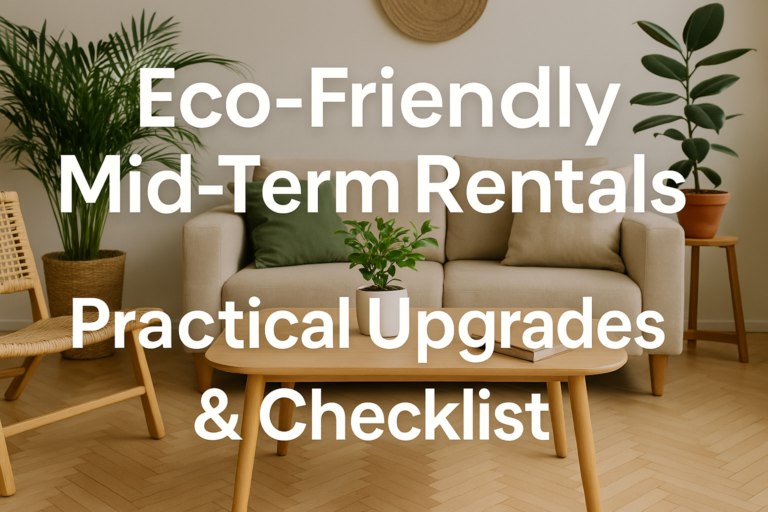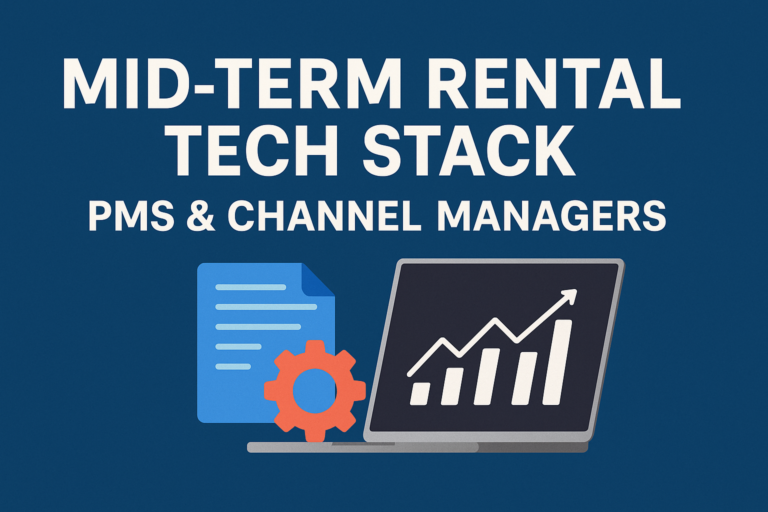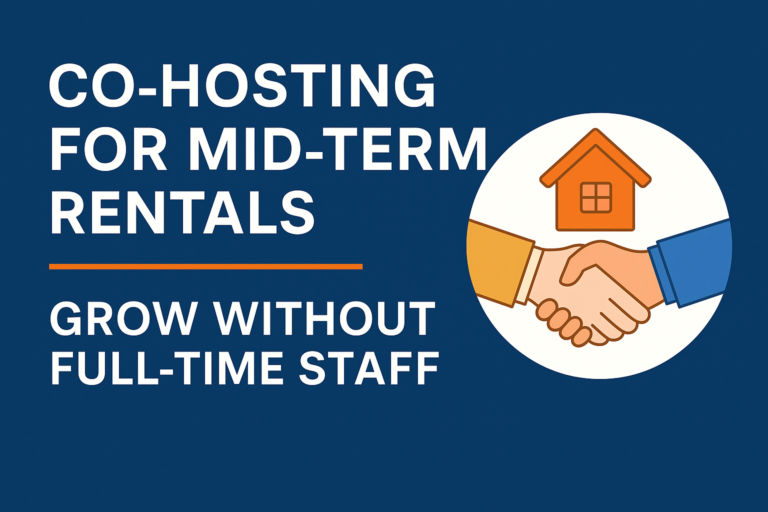Maximizing Opportunities in the Mid-Term Rental Market
Looking to navigate the mid-term rental market? As a landlord, it is crucial to understand the unique dynamics of this category. Mid-term rentals occupy a space between short and long-term stays, catering to tenants with specific needs and preferences. In this comprehensive guide, we will explore all aspects of mid-term rentals, including how to attract potential tenants and where to list your property. Get ready to unlock the potential of mid-term rentals!
Understanding Mid-Term Rentals
A mid-term rental refers to a lease period ranging from 1 to 12 months, with the commonly accepted standard being 3-6 months. Also known as month-to-month rentals, these arrangements offer tenants flexibility without the long-term commitment typically associated with traditional leases. While mid-term rentals have long been popular in European cities, the trend is now gaining traction in the United States. A recent survey conducted in 2022 revealed that month to month leases made up 30% of the rental market in the US. As we delve deeper, we will explore how mid-term rentals cater to a specific set of renters, presenting opportunities for landlords to tap into new markets while potentially commanding higher rental rates.
Targeting Mid-Term Renters
Mid-term rentals primarily attract individuals seeking temporary housing solutions that do not require lengthy commitments. Here are some key demographics landlords can target when marketing mid-term rentals:
- Students: Many college students prefer leases that align with the academic year, allowing them flexibility during summer internships and travel. Consequently, mid-term rentals cater to their needs, particularly for those doing 3-month internships.
- Individuals Relocating: When relocating to unfamiliar areas, people often hesitate to commit to long-term leases as they acquaint themselves with new surroundings. This rings especially true for expatriates and those moving to bustling cities with numerous neighborhood options. By offering mid-term rentals, landlords bridge the transitional gap and meet an essential need.
- Professionals with Temporary Work Commitments: Certain professionals, such as nurses, seasonal agricultural workers, and contractors, frequently experience a nomadic lifestyle due to work commitments. Mid-term rentals present an attractive option for this demographic, with corporate housing for consultants standing out as a particularly lucrative market segment. Businesses sponsoring these professionals often cover rent expenses, allowing for potentially higher rental rates compared to individual tenants.
- Homeowners in Transition: Selling a home often leads to a gap between transactions, leaving homeowners in need of temporary housing while they find their next property, explore new neighborhoods, or undertake renovations.
Mid vs. Short vs. Long-Term Rentals
Understanding the differences between rental categories helps landlords tailor their offerings and attract the right tenants. The variations lie in lease duration and the corresponding target audience:
- Short-Term Rental:
- Lease Length: 1-30 days
- Renters: Typically weekend travelers and vacationers
- Mid-Term Rental:
- Lease Length: 1-12 months
- Renters: Individuals requiring stays longer than a month, without committing to a full year. This includes those in transition between homes or educational pursuits.
- Long-Term Rental:
- Lease Length: 12 months and above
- Renters: Individuals settled in an area with long-term plans, typically beyond college age.
Advantages and Challenges of Mid-Term Rentals
Weighing the Pros and Cons
When considering mid-term rentals, landlords must evaluate the benefits and challenges to make informed decisions. Here are some key factors to consider:
Pros of Mid-Term Rentals:
- Steady Cash Flow: Mid-term rentals offer a stable income stream compared to short-term rentals, mitigating seasonal fluctuations often experienced in vacation rentals.
- Avoid Long-Term Tenant Hassles: With higher turnover rates, mid-term rentals allow landlords to swiftly address problematic renters, minimizing prolonged landlord-tenant disputes.
- Seize Untapped Markets: By offering mid-term rentals, landlords cater to specific needs unmet by other rental options, enhancing the attractiveness of their properties and expanding their business potential.
- Potential for Higher Rent: Month-to-month lease structures often allow landlords to charge higher rental rates compared to longer-term leases.
- Increased Flexibility: Offering shorter lease commitments grants landlords more flexibility in their rental business, catering to changing market demands.
Cons of Mid-Term Rentals:
- Frequent Tenant Turnover: The higher turnover rate associated with mid-term rentals requires more frequent tenant searches, potentially increasing the landlord’s workload.
- Furnishing Costs: Mid-term rentals typically require furnished properties, which may involve a significant initial investment. However, this investment often pays off in the long run.
- Tenant Risks: Certain mid-term renters, such as students, may pose higher risks in terms of noise disturbance and property damage. Implementing robust tenant screening processes is vital to mitigate these risks.
Ideal Platforms for Listing Mid-Term Rentals
Maximizing Visibility
Boost the visibility of your mid-term rental by listing it across multiple platforms. Consider these sites, specializing in mid-term rentals or offering comprehensive listings:
- MiniStays: The fastest growing platform dedicated to monthly furnished rentals with all of the tools hosts and guests are looking for in one place. Free to list. Low booking fees.
- Landing: This platform focuses on monthly furnished rentals, attracting tenants with an average lease length of 3-6 months.
- Kopa: A highly regarded platform specifically tailored for mid-term rentals, streamlining the listing process.
- Furnished Finder: A platform catering to traveling medical professionals and business travelers, exclusively listing furnished mid-term rentals.
- Facebook Marketplace: Leverage the broad reach of this platform, widely used by individuals searching for rentals.
- MLS: Despite being a general listing site, MLS gains significant attention from portals like Redfin and Zillow, expanding the potential tenant pool.
Diving into the world of mid-term rentals opens up exciting opportunities for landlords. With careful consideration of the advantages and challenges, landlords can capitalize on the steady cash flow, tap into niche markets, and adapt to evolving demands. Don’t forget to protect your investment with rental property insurance coverage tailored to your specific needs. Embrace the potential of mid-term rentals and unlock new levels of success as a landlord!



